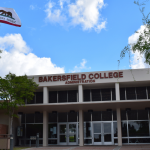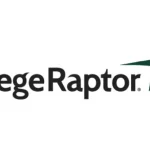Schools and students need to interact seamlessly in an increasingly resource-constrained world.
For institutions, the reason is simple: in today’s enrollment environment – every student counts. Funding, institutional success, and fiscal stability all depend on it.
Whether the institution is a two-year college seeking to serve the community and meet its enrollment targets or a four-year private institution that needs a competitive advantage in admissions, engagement is critical. And it is engagement with existing students that helps keep students on the path to success.
It’s a two-way street though and for students both prospective and current, engagement is equally critical. Yet, there are barriers…
Barriers to Engagement
There are three notable barriers and roadblocks for students when engaging with a college or university.
Traditional Office Hours
Students aren’t normally working through administrative issues during normal business hours (40% of all of our student inquiries occur after hours). When in-office spikes in service do occur (e.g. just before the start of each semester) it is unreasonable and nearly impossible to support them during regular business hours, much less during the hours in which offices are closed.
Cost and Complexity of College
College is expensive. The financial aid system is intended to make it affordable for those that need help. However, the system has complexities to it, especially around processes such as Verification. For students with unique situations or changing situations, questions arise. And the resulting friction can be super frustrating for students (and parents too).
Confusing Terminology
Admissions, Financial Aid, Bursar, Registrar, and other departments have complex vocabulary, forms, and procedures. Students want to attend college to learn, and grow their skills…not to learn how to navigate the college system effectively.
Breaking Down Engagement Barriers
How can institutions break down barriers? Start by thinking about the students themselves. Ask: What is important to them? When you do, you are likely to find some key themes.
Access resources on their terms
Most students will want in-person courses, but they will also want virtual access to staff and 24/7 support. They have that sort of access to other organizations in their lives and they expect it from their educational institution as well.
Make the Affordability Case Easy-to-Understand
Talk is cheap. Make the case that college is affordable by putting in the time to make understanding that simple, clear, and concise. Whether through Award Letters, information on the website, or how-to video explainers, there is a tremendous opportunity to present financial aid information in a way that is both digestible and memorable.
Two-Way Communication
If students make the effort to connect with their institution, they want to know that the school will be there to support them. This is true whether it’s an in-person visit (long lines are super frustrating), on the phone (wait times are a killer) or when they send an email or a text message (a timely response is a must). Students want to know their institution is responsive to their needs.
How AI-Powered Engagement Can Benefit Students
In the constant resource constrained world we’re in, existing strategies and technologies alone are insufficient for colleges that want to thrive. A new approach is needed. AI-powered technologies offer considerable promise to “scale” the personal touch for student service and support.
Students will never turn down individualized human support. However, students prize speed, accuracy, and consistency above almost everything else. If they can get an answer from an AI technology at 10pm at night, instead of waiting till the following day to get it from a person, they will gladly accept that. And they don’t want to hear one answer from one office, and something different from another one,they want consistency.
Today’s tech savvy and increasingly non-traditional students are looking for service and support 24/7. AI Chatbots, as one example, are a great win for colleges looking to provide students with quick and consistent answers to their questions. A quick answer can often be the “first step” that helps tip a moderately interested prospective student into a highly interested prospective student. This engagement signals to the student that they are valued, and that the institution is accessible to them.
The Wrap
Ocelot has worked with colleges and universities for over two decades, through various iterations and advances in technology. Today’s affordable AI technologies are by far the most scalable, and most student friendly to have ever come into higher education. These are the tools that students want to use. They want their colleges to provide them. They want to know that their institution is accessible, affordable, and engaged 24/7.















